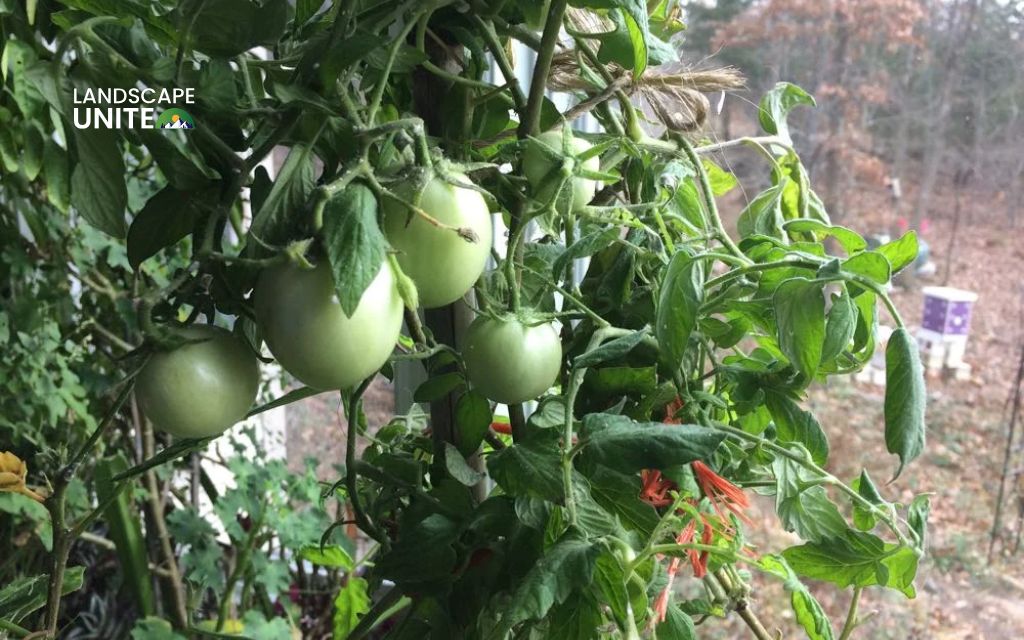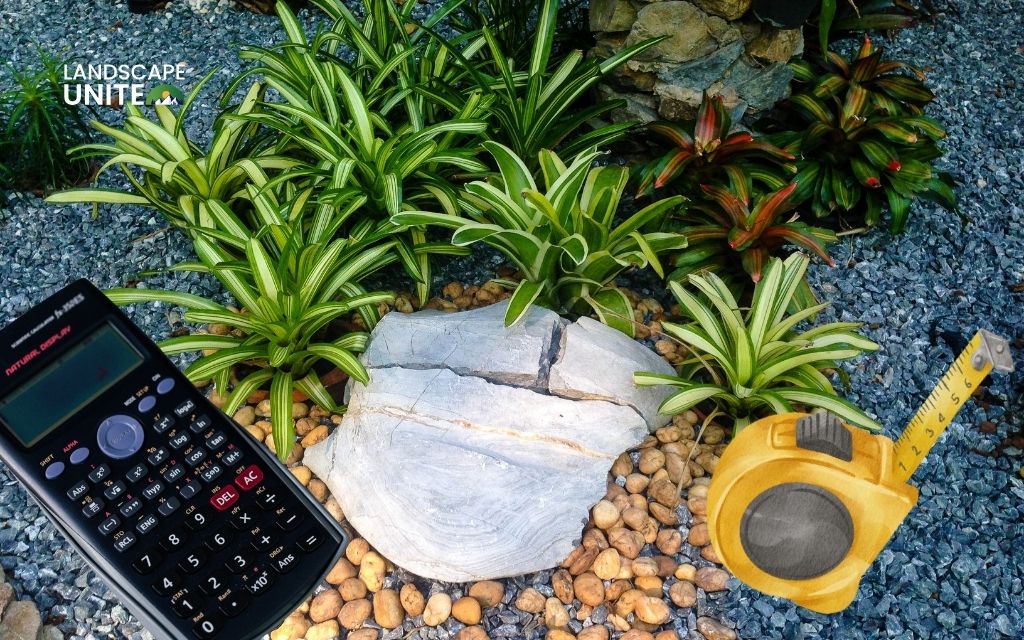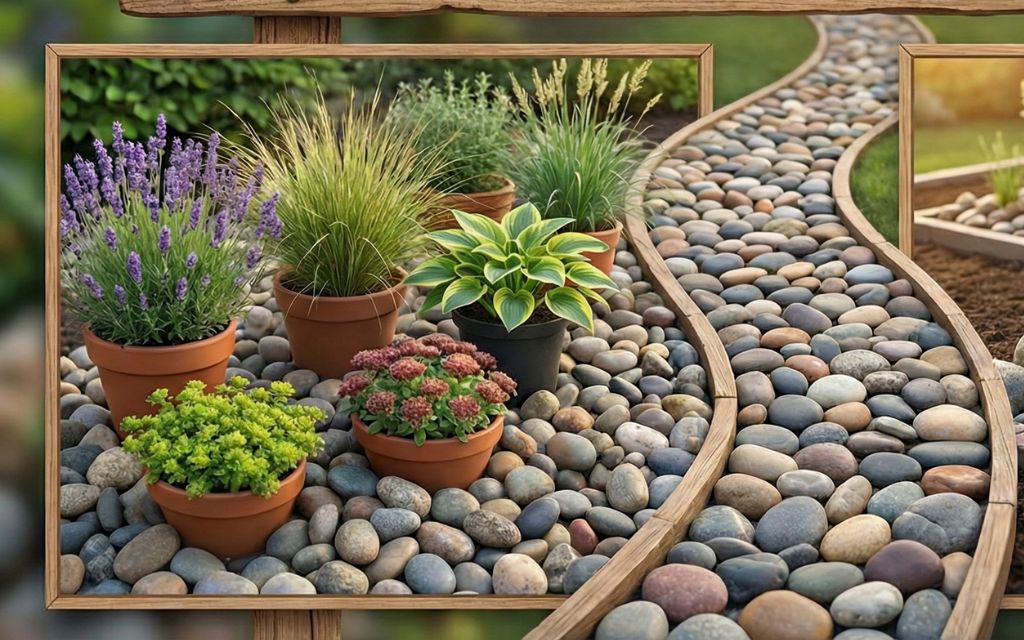As the growing season winds down, many gardeners face the same dilemma: watching their beloved tomato plants succumb to the first frost. But what if you could save your favorite varieties, jumpstart your spring harvest, and save money on seeds for next year? Learning how to winterize tomato plants opens up exciting possibilities for year-round gardening success.
This comprehensive guide serves home gardeners with special attention to container and urban growers who want to maximize their limited growing space. Keep reading to discover 4 methods for protecting your tomato plants through winter, with step-by-step instructions and tips for success.
Can tomato plants survive winter?
Tomato plants are actually tender perennials rather than true annuals, meaning they can live for multiple years under the right conditions. However, in most U.S. climates, they’re treated as annuals because they die off after frost unless given proper protection or brought indoors.
The harsh reality is that tomato plants cannot tolerate freezing temperatures. Once temperatures drop to 32°F (0°C) or below, the plant tissues freeze and die. Even temperatures in the mid-30s can cause significant damage to leaves and stems.
However, in warmer USDA zones 9-11, tomatoes can survive winter outdoors with mild protection measures. In these regions, gardeners often see their plants go dormant during cooler months, then resume growth when temperatures warm up in spring.
For gardeners in colder zones, indoor protection becomes essential for plant survival.

How to winterize tomato plants: 4 ways to overwinter
Method 1: Bring potted tomato plants indoors
This method works best for small determinate or patio varieties that are already growing in containers. The compact size of these plants makes them ideal candidates for indoor cultivation during winter months.
- Select healthiest plants and gradually acclimate over 1 week
- Choose location with 6-8 hours daily light (sunny window or grow lights)
- Prune back plants by 1/3 to reduce size and transplant shock
- Reduce watering frequency to prevent root rot and stop fertilizing during dormancy
- Maintain indoor temperatures between 60-70°F
Monitor regularly for aphids or whiteflies, which can multiply quickly in warm, dry indoor conditions. These pests often appear on stressed plants, so maintaining good air circulation and proper humidity levels helps prevent infestations.
Method 2: Take tomato cuttings (clone your plants)
Taking cuttings offers an excellent way to preserve your favorite tomato varieties. Choose healthy, non-flowering stems from your best-performing plants, selecting shoots that are 4-6 inches long with several sets of leaves.
Make clean cuts just below a leaf node using sterilized pruning shears. Remove the lower leaves to prevent rot, leaving only the top 2-3 sets of leaves to support photosynthesis during root development.
Root the cuttings in water or moist potting mix indoors, maintaining consistent moisture without waterlogging. Water rooting allows you to monitor root development visually, while soil rooting often produces stronger root systems from the start.
Timeline and results:
- Roots develop in 2-3 weeks under optimal conditions
- Transplant when roots reach 2-3 inches long
- Ready for spring planting with early growth advantage
Method 3: Grow tomatoes indoors over winter (greenhouse or grow tent)
This method appeals to dedicated indoor gardeners or those with hobby greenhouses who want to maintain active tomato production throughout winter. Success requires careful attention to lighting, temperature, and pollination needs.
Essential equipment:
- Full-spectrum LED or fluorescent grow lights
- Temperature control system
- Small brush for hand pollination
- Humidity monitor
Process:
Provide grow lights for 12-14 hours daily, using full-spectrum LED or fluorescent fixtures positioned 6-12 inches above plants. Maintain consistent temperatures between 65-75°F during the day, with nighttime temperatures no lower than 60°F.
Monitor humidity levels carefully, maintaining 50-70% relative humidity to prevent both plant stress and fungal diseases. Good air circulation becomes essential in enclosed growing environments.
Recommended varieties:
- Cherry tomatoes
- Compact determinate types
- Dwarf cultivars
- Fast-maturing varieties

Method 4: Outdoor winterizing for tomato plants
For gardeners in milder climates or those wanting to extend the outdoor season, protective measures can help tomato plants survive light frosts and continue producing.
Install frost cloths, plastic row covers, or cold frames around plants before cold weather arrives. These barriers trap heat and create a microclimate several degrees warmer than ambient air temperature.
Apply heavy mulch around plant bases to protect root systems from freezing. Use 4-6 inches of straw, leaves, or other organic materials to insulate the soil and maintain consistent root zone temperatures.
Create windbreaks using burlap screens, temporary fencing, or strategic placement of other plants to reduce cold wind exposure. Cold winds can quickly drop effective temperatures and damage plant tissues even when air temperatures remain above freezing.
Why overwinter tomato plants?
The decision to overwinter tomato plants offers several compelling advantages that make the effort worthwhile.
Saving heirloom or indeterminate varieties tops the list, especially when you’ve discovered a particularly delicious or productive plant that you want to preserve for future seasons.
From an economic perspective, overwintering reduces the cost and time associated with starting from seed each year. Instead of purchasing new seeds or seedlings, you can maintain your existing plants and have mature specimens ready for the growing season.
Perhaps most exciting is the potential for earlier fruiting in spring. Overwintered plants have established root systems and mature stems, allowing them to produce flowers and fruit weeks ahead of newly planted seedlings. This head start can extend your harvest season significantly.
When to start winterizing your tomato plants
Timing is crucial when learning how to winterize tomato plants effectively. The process should begin before the first frost arrives in your area. Check your local frost dates and start preparations at least two weeks in advance to give plants time to adjust to new conditions.
Watch for the warning sign of night temperatures dipping below 45°F (7°C). This threshold indicates that frost conditions are approaching, and your tomato plants will soon face potentially lethal temperatures.
Don’t wait for the first frost warning to begin your winterization efforts.

Pro tips for successful overwintering
Success in overwintering tomato plants depends on attention to detail and proper technique.
- Use sterile containers and clean shears throughout the process to prevent disease transmission that could kill plants during their vulnerable winter period.
- Maintain moderate humidity levels around indoor plants. Too much moisture encourages mold growth, while overly dry air stresses plants and makes them susceptible to pest problems.
- Rotate plants in sunny windows regularly to promote even growth and prevent stems from becoming elongated toward the light source.
- Begin light fertilization after new growth appears in late winter or early spring, typically February or March. Use a balanced, diluted fertilizer to support renewed growth without overwhelming dormant plants.
- Keep detailed records of which varieties and methods work best in your specific conditions. This information becomes invaluable for refining your technique and achieving better results each year.
Conclusion
Overwintering your tomato plants is a rewarding way to get a jumpstart on next season’s harvest, save your favorite varieties, and keep your green thumb active year-round. Whether you choose to root cuttings, move pots indoors, manage plants in a greenhouse, or provide outdoor protection, this guide provides the practical steps needed for success.
Each method offers unique advantages depending on your space, climate, and gardening goals. The key is choosing the approach that fits your situation and following proper techniques for plant health.
Remember that overwintering tomatoes requires patience and attention to detail, but the rewards of early spring harvests and preserved heirloom varieties make the effort worthwhile.
Explore more plant care guides and winter gardening tips in our gardening resource center to keep your green thumb active all season long.
Frequently asked questions (FAQs)
Can you overwinter tomato plants in a garage or basement?
Yes, but only if you provide adequate lighting through grow lights. Garages and basements typically lack sufficient natural light for healthy plant growth. Maintain temperatures above 55°F and ensure good ventilation to prevent humidity problems.
Do indoor tomato plants produce fruit in winter?
Indoor tomato plants can produce fruit during winter with proper lighting (12-14 hours daily), consistent temperatures (65-75°F), and hand pollination. However, production will be lower than outdoor summer growing, and compact varieties perform better than large indeterminate types.
How long do tomato cuttings take to root?
Tomato cuttings typically develop roots within 2-3 weeks when kept in warm conditions (70-75°F) with consistent moisture. Water-rooted cuttings show visible root development sooner, while soil-rooted cuttings may take slightly longer but often develop stronger root systems.
What’s the best tomato variety to overwinter?
Popular choices include ‘Patio Princess,’ ‘Tumbling Tom,’ ‘Sweet 100,’ and ‘Stupice.’ These varieties adapt better to container growing and indoor conditions than large indeterminate types.
Can I prune tomato plants heavily for winter?
Yes, pruning back tomato plants by ⅓ to ½ helps them adapt to lower light indoor conditions and reduces transplant shock. Remove dead, diseased, or damaged growth first, then trim healthy stems to maintain manageable size while preserving the main structure.


